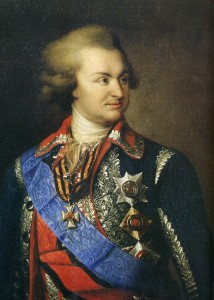In the fifth chapter of Three New Deals titled “Public Works,” Wolfgang Schivelbusch compares the motivations for and the goals of the large public projects carried out by Fascist Italy, Nazi Germany, and the United States during the 1930s. Schivelbusch argues that each country’s project responded developments within the Soviet Union, their shared competitor ((Wolfgang Schivelbusch, “Public Works,” in Three New Deals – Reflections on Roosevelt’s America, Mussolini’s Italy, and Hitler’s Germany, 1933-1939) (New York: Picador, 2006), 104)). Although Italy’s drainage of the Pontine Marshes, German’s construction of the autobahn, and the United States’ construction of dams and power plants through the Tennessee Valley Authority Act uniquely reflected each country’s unique social context and needs, all of the projects reflected the modern theme of promoting individualism through collectivism.
These projects drew the attention of the entire nation while only actually affecting a small portion of the population. Nevertheless, with each project the state created a new national prize and monument around which the people could feel a sense of pride. The projects themselves served as propaganda, they created fantasy’s that masked the national reality. Mussolini galvanized and militarized the Italian people with his “harvest battle” as he marched tractors and people into new cities long before the start of WWII ((Schivelbusch, Three New Deals, 151)). To quote David Lilienthal, a member of the TVA’s board of directors, the new electrical dams and towns created by the TVA represented “a token of the virility and vigor of democracy” during the depths of the depression and a period where only 20 percent of American home had electricity ((Schivelbusch, Three New Deals, 151)). Hitler preemptively constructed the autobahn before the motorization of Germany ((Schivelbusch, Three New Deals, 170)). These national projects united the people around a sense of achievement while also promoting a sense of individuality. The new Italian agricultural land and towns promoted self sufficiency and an independent lifestyle. In the American and German projects, the myth of widespread electricity and mobility respectively fostered a sense of freedom that technological developments facilitated. All three projects left the majority of the population yearning for a new lifestyle; albeit, a national dream.
As Schivelbush outlines in chapter four titled, “Back to the Country,” the aforementioned states tried to develop the same sense of collective individualism in their efforts to institute economic autarky, national economic stability achieved through individual self-sufficiency ((Schivelbusch, Three New Deals, 107)). Furthermore, each state’s program reinforces one of core characteristics of a modern state outlined by David L. Hoffmann in his book Russian Modernity: Politics, Knowledge, Practices. Hoffman identified the modern state’s ability to “utilize the emotional and mobilizational power of traditional appeals and symbols, themselves disembedded from their original context and recast for political purposes” ((Hoffman, David L, and Yanni Kotsonis. Russian Modernity: Politics, Knowledge, Practices. (London: Palgrave Macmillan, 2000), 247)). Postwar, modern governments seemingly never acted without some ulterior or latent political motive. What other government programs support this thinking? Could a modern government ever implement policy devoid of propagandistic values? How did/has the public works of Italy, Germany, and the United States changed our view of government programs? Did these public works achieve their goals? How are they viewed today?

